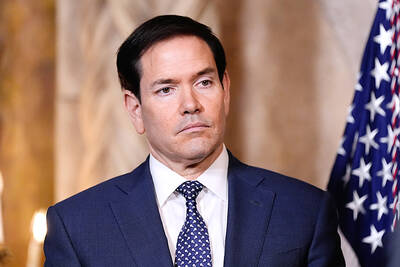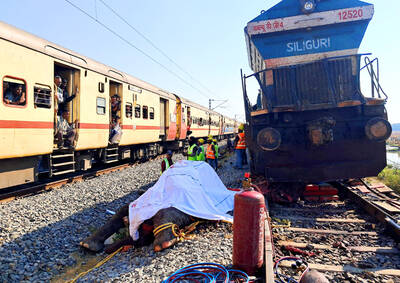New maps show that the Earth is rapidly running out of fertile land and that food production will soon be unable to keep up with the world's burgeoning population. The maps reveal that more than one- third of the world's land is being used to grow crops or graze cattle.
Scientists at the University of Wisconsin-Madison combined satellite land cover images with agricultural census data from every country in the world to create detailed maps of global land use. Each grid square was 10km across and showed the most prevalent land use in that square, such as forest, grassland or ice.
"In the act of making these maps we are asking: where is the human footprint on the Earth?" said Amato Evan, a member of the University of Wisconsin-Madison research team presenting its results this week at a meeting of the American Geophysical Union in San Francisco.
The current map shows a snapshot of global land use for the year 2000, but the scientists also have land use data going back to 1700, showing how things have changed.
"The maps show, very strikingly, that a large part of our planet [roughly 40 percent] is being used for either growing crops or grazing cattle," said Navin Ramankutty, a member of the Wisconsin-Madison team.
By comparison, only 7 percent of the world's land was being used for agriculture in 1700. The Amazon basin has seen some of the greatest changes in recent times, with huge swaths of the rainforest being felled to grow soya beans.
"One of the major changes we see is the fast expansion of soybeans in Brazil and Argentina, grown for export to China and the EU," Ramankutty said.
This agricultural expansion has come at the expense of tropical forests in both countries. Meanwhile, intensive farming practices mean that cropland areas have decreased slightly in the US and Europe and the land is being gobbled up by urbanization. The research indicates that there is now little room for further agricultural expansion.
"Except for Latin America and Africa, all the places in the world where we could grow crops are already being cultivated. The remaining places are either too cold or too dry to grow crops," Ramankutty said.
The scientists hope that by continuing to monitor changes in land use, they will be able to highlight problems and help find solutions.
"The real question is, how can we continue to produce food from the land while preventing negative environmental consequences such as deforestation, water pollution and soil erosion?" Ramankutty said.
In other environmental news, scientists now now believe the role of snow in maintaining the Earth's climate is far more important than previously thought. According to a new climate model in which researchers imagined a world without snow, not only would global temperatures rise but, bizarrely, the amount of permanently frozen land in the world would also go up.
Losing every last snowflake in the world is an unlikely scenario. But global warming is expected to melt around 10 to 20 percent of the world's snow in the future and, by modeling the no-snow climate, Stephen Vavrus from the University of Wisconsin-Madison was able to work out how the predicted melting would affect the planet. Snow tends to cool the air above it and stops the Earth from overheating. Vavrus found that, in a world without snow, the temperatures in the northern hemisphere rocketed.
"Without snow we see a large atmospheric warming of up to 5?C over northern Eurasia and North America annually [8-9?C in winter], and a globally averaged warming of 0.8?C," he said.
Snow provides a warm insulating blanket and without it vast areas of land would become permanently frozen.
"Soils in presently snow-covered areas, such as Siberia, would cool considerably, by up to 20?C during winter. As a result, the permafrost would expand equatorwards by 500 to 1,000km, even though the overlying air warms by several degrees," said Vavrus, who will present his findings at the American Geophysical Union meeting this week.

REVENGE: Trump said he had the support of the Syrian government for the strikes, which took place in response to an Islamic State attack on US soldiers last week The US launched large-scale airstrikes on more than 70 targets across Syria, the Pentagon said on Friday, fulfilling US President Donald Trump’s vow to strike back after the killing of two US soldiers. “This is not the beginning of a war — it is a declaration of vengeance,” US Secretary of Defense Pete Hegseth wrote on social media. “Today, we hunted and we killed our enemies. Lots of them. And we will continue.” The US Central Command said that fighter jets, attack helicopters and artillery targeted ISIS infrastructure and weapon sites. “All terrorists who are evil enough to attack Americans are hereby warned

The death of a former head of China’s one-child policy has been met not by tributes, but by castigation of the abandoned policy on social media this week. State media praised Peng Peiyun (彭珮雲), former head of China’s National Family Planning Commission from 1988 to 1998, as “an outstanding leader” in her work related to women and children. The reaction on Chinese social media to Peng’s death in Beijing on Sunday, just shy of her 96th birthday, was less positive. “Those children who were lost, naked, are waiting for you over there” in the afterlife, one person posted on China’s Sina Weibo platform. China’s

‘POLITICAL LOYALTY’: The move breaks with decades of precedent among US administrations, which have tended to leave career ambassadors in their posts US President Donald Trump’s administration has ordered dozens of US ambassadors to step down, people familiar with the matter said, a precedent-breaking recall that would leave embassies abroad without US Senate-confirmed leadership. The envoys, career diplomats who were almost all named to their jobs under former US president Joe Biden, were told over the phone in the past few days they needed to depart in the next few weeks, the people said. They would not be fired, but finding new roles would be a challenge given that many are far along in their careers and opportunities for senior diplomats can

Seven wild Asiatic elephants were killed and a calf was injured when a high-speed passenger train collided with a herd crossing the tracks in India’s northeastern state of Assam early yesterday, local authorities said. The train driver spotted the herd of about 100 elephants and used the emergency brakes, but the train still hit some of the animals, Indian Railways spokesman Kapinjal Kishore Sharma told reporters. Five train coaches and the engine derailed following the impact, but there were no human casualties, Sharma said. Veterinarians carried out autopsies on the dead elephants, which were to be buried later in the day. The accident site